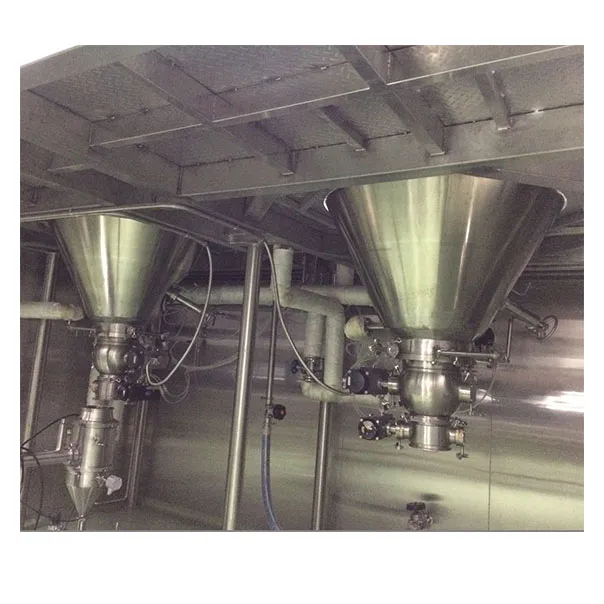The Evolution of Conical Mixer Designs: Past, Present, and Future
The conical mixer, a staple in various conical mixer such as pharmaceutical, food, and chemical processing, has undergone significant transformations over the years. From its humble beginnings to the sophisticated designs of today, the conical mixer has evolved to meet the changing needs of manufacturers. In this article, we will delve into the history of conical mixer designs, explore their current state, and examine the future directions of this crucial equipment.
The Past: Early Conical Mixer Designs
The first conical mixers emerged in the early 20th century, primarily used in the pharmaceutical industry for mixing and blending powders. These early designs were simple, consisting of a conical-shaped vessel with a rotating shaft and blades. The conical shape allowed for efficient mixing and discharge of materials, reducing the risk of dead zones and improving product quality. However, these early mixers were limited in their capacity and versatility, often requiring manual intervention and experiencing frequent breakdowns.
Advancements in the Mid-20th Century
The mid-20th century saw significant advancements in conical mixer designs. The introduction of new materials, such as stainless steel, enabled the construction of more durable and sanitary mixers. Additionally, the development of more sophisticated drive systems and gearboxes allowed for increased capacity, speed, and efficiency. This period also saw the introduction of various mixer configurations, including the addition of jackets for heating and cooling, and the use of vacuum and pressure systems to enhance mixing and drying capabilities.

The Present: Modern Conical Mixer Designs
Today, conical mixers are designed with a focus on efficiency, flexibility, and safety. Modern mixers feature advanced drive systems, including servo motors and variable frequency drives, allowing for precise control and optimization of the mixing process. The use of computational fluid dynamics (CFD) and other simulation tools has enabled the design of more efficient mixer geometries, reducing energy consumption and improving product quality. Furthermore, modern conical mixers are designed with cleanability and sanitization in mind, featuring smooth surfaces, rounded corners, and easy-to-clean components.
Current Trends and Innovations
The conical mixer industry is currently experiencing several trends and innovations. One notable trend is the increasing adoption of automation and Industry 4.0 technologies, enabling real-time monitoring and control of the mixing process. Additionally, there is a growing focus on sustainability and energy efficiency, driving the development of more eco-friendly mixer designs. The use of advanced materials, such as composites and nanomaterials, is also becoming more prevalent, offering improved durability and performance. Finally, the integration of conical mixers with other equipment, such as dryers and granulators, is becoming more common, enabling streamlined processing and reduced capital expenditures.
The Future: Emerging Technologies and Design Directions
As the conical mixer industry continues to evolve, several emerging technologies and design directions are expected to shape the future of this equipment. One area of focus is the development of more advanced mixer geometries, leveraging CFD and other simulation tools to optimize mixing efficiency and product quality. Another area of research is the integration of artificial intelligence (AI) and machine learning (ML) algorithms, enabling predictive maintenance, real-time optimization, and autonomous operation. The use of additive manufacturing (3D printing) is also expected to become more prevalent, allowing for the creation of complex mixer geometries and customized components.
Conclusion
The conical mixer has come a long way since its inception, evolving from a simple, manual device to a sophisticated, automated machine. As the industry continues to advance, we can expect to see even more innovative designs, leveraging emerging technologies and design directions to improve efficiency, sustainability, and product quality. Whether you’re a seasoned manufacturer or a newcomer to the industry, understanding the evolution of conical mixer designs is crucial for optimizing your processing operations and staying ahead of the competition.